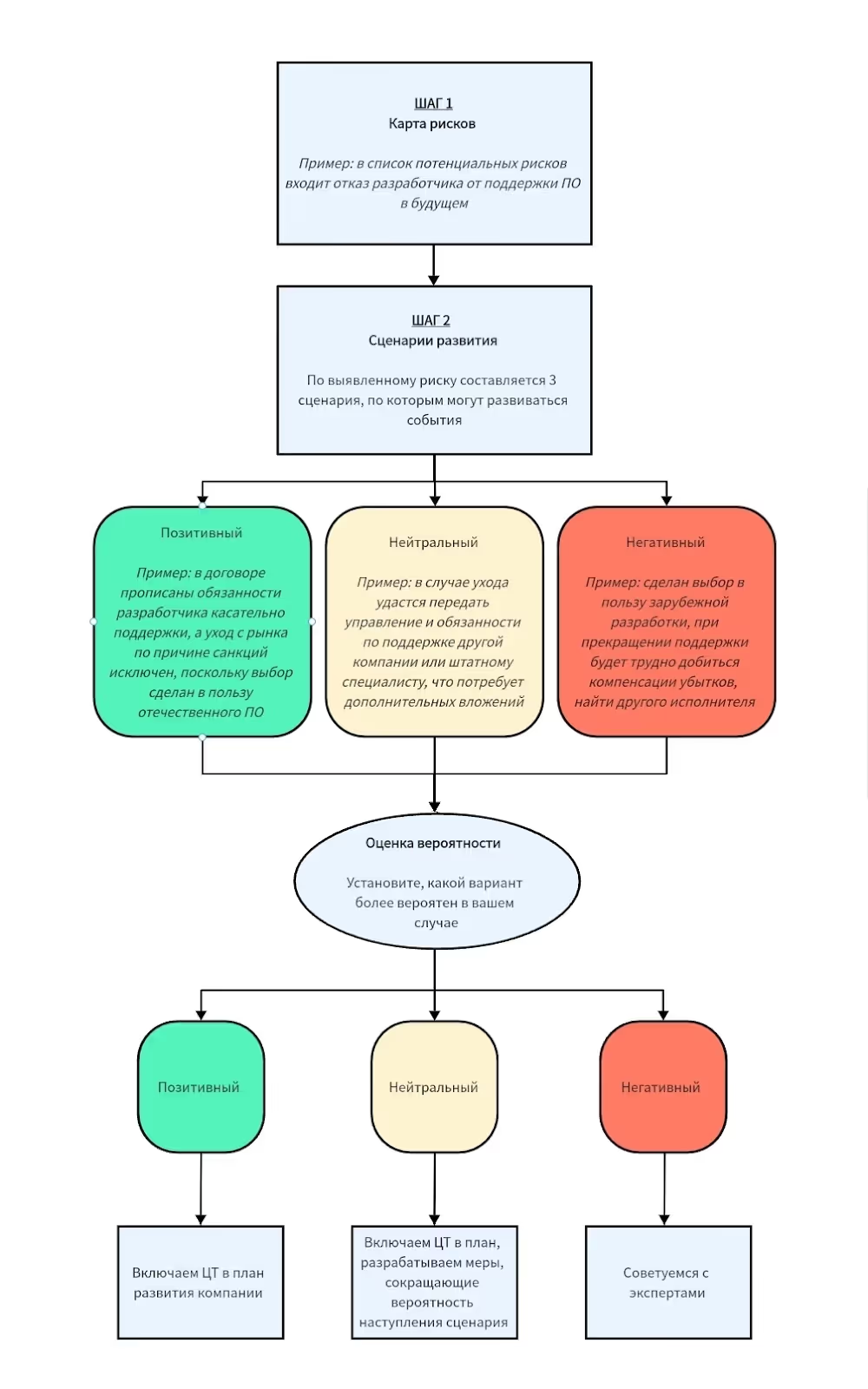Digital transformation is a global business change that affects almost all of its processes, from document management to customer service. When implemented correctly, this solution helps to reduce costs, reduce the workload on employees and eliminate errors that arise from the human factor. However, there are risks that businesses may face both at the integration stage and after restructuring. It is important to identify and take them into account already at the strategic planning stage.
What are the risks associated with digital business transformation?
In the scientific article “Risks of digital enterprise transformation”, such factors are divided into 3 main categories.
N.G. Lopatova, Head of the Digital Economic Transformation Sector at the Institute of Economics of the National Academy of Sciences of the Republic of Belarus:
”Three large groups of internal risks for organizations can be identified: economic (finance, investment), technical (infrastructure, standards, technical integration) and organizational (corporate culture, competencies)”
Their identification makes it possible to analyze potential consequences and take measures to prevent their occurrence and development.
Economical
These digital business transformation risks can be divided into several subgroups. The first includes factors related to the assessment of feasibility:
- the complexity of formulating the goal of digital transformation of a particular enterprise;
- difficulties in assessing the economic benefits of introducing new approaches;
- wrong choice of the stage at which business transformation is carried out.
The second subgroup includes risks directly related to the financial side of the issue. This is the lack or shortage of funds necessary to integrate CT, a wide range of prices on the market, a long-term payback period, as well as additional expenses that may be required after the implementation of digital solutions. The latter include, for example, technical support costs, software updates, hardware maintenance, and other issues.
It's important! The larger the business is and the less adaptable it is to the upcoming digital transformation, the more money it will need to invest. To prevent spending from emptying the company's budget, you should plan to gradually implement solutions. To do this, it is necessary to formulate the main goal, intermediate stages and tasks, and then develop specific actions based on them. This will help optimize costs, making the process affordable even with a modest budget.
Organizational
This category of digital transformation risks includes factors that can negatively affect the effectiveness of new technologies at the implementation stage. This could be:
- lack of support for the proposed solution from management or business owner;
- the discrepancy between the developed model and the needs of the target audience;
- staff rejection of innovation;
- difficulties associated with training employees or finding new specialists;
- errors in managing digital processes;
- the discrepancy between the implemented solution and the enterprise's cybersecurity level;
- discontinuation of technical support due to geopolitical factors.
To eliminate these risks, a balanced assessment of the pros and cons of digital transformation is necessary, the results of which should be shared not only with management, but also with employees. The former needs to demonstrate the benefits of implementing a new approach by showing how it will affect profits and development prospects, and staff should be shown how innovations can make their work easier.
In addition, maximum attention should be paid to selecting a company that will develop and integrate CT at the enterprise. In the context of increasing import substitution, preference should be given to Russian developers with a good reputation, whose agreements clearly state their rights and obligations, including those related to information security.
Technical
Technical risks can arise at almost any stage. The most common and dangerous factors are:
- a discrepancy between hardware and software that may be outdated or inappropriate for adaptation;
- insufficient level of digitalization or automation of internal processes;
- dependence on providers and developers whose IT products do not provide for the possibility of transferring control to other specialists or business owners;
- difficulty in bringing a large number of standards and protocols into line.
Such risks are especially often faced by companies that decide to entrust the digital transformation task to an in-house IT department. Such specialists do not always have the appropriate skills; they cannot foresee all factors that could negatively affect the integration of innovative solutions. To avoid such dangers, it is better to entrust the task to a proven one IT business partner, which will provide not only technical support for the software, but also its implementation, staff training and other processes.
How do you understand how high the risks of CT are?
It is necessary to act step by step to determine what factors can affect the effectiveness of digital transformation, its payback, and other aspects. First of all, we need to form a long-term forecast that will help you understand:
- how CT will benefit in the future;
- what investments will be required to innovate;
- what may affect payback periods;
- what risks may require additional investments (for example, changing the security system or training personnel).
Already at the strategic planning stage, it is worth considering implementing CT through the prism of risk management. The analysis is carried out in stages.
Step 1. Make a risk map. For convenience, categorize them by type (economic, technical, organizational) and by business hazard (critical, most dangerous, moderately dangerous, least dangerous).
Step 2. Process each factor into three types of scenarios — positive, neutral, and negative. After that, estimate the probability of each of them occurring (from 1 to 10).
Step 3. Further actions depend on the results obtained:
- if the negative scenarios outweigh, you should consult with experts who will tell you how to avoid problems;
- if the potential profit outweighs, and positive or neutral scenarios are more likely, the introduction of CT should be included in the enterprise's strategic plan.

If there are difficulties in assessing the risks of digital transformation, entrust this task to KT.team experts. We will carefully study your business plan, assess the degree of digitalization of the company, and give recommendations on how to optimize and reduce the dangers that accompany the procedure. As your trusted business partner in IT, we will create an individual strategy for you, the implementation of which will help you achieve measurable results!
The key: digital transformation risks


.avif)






